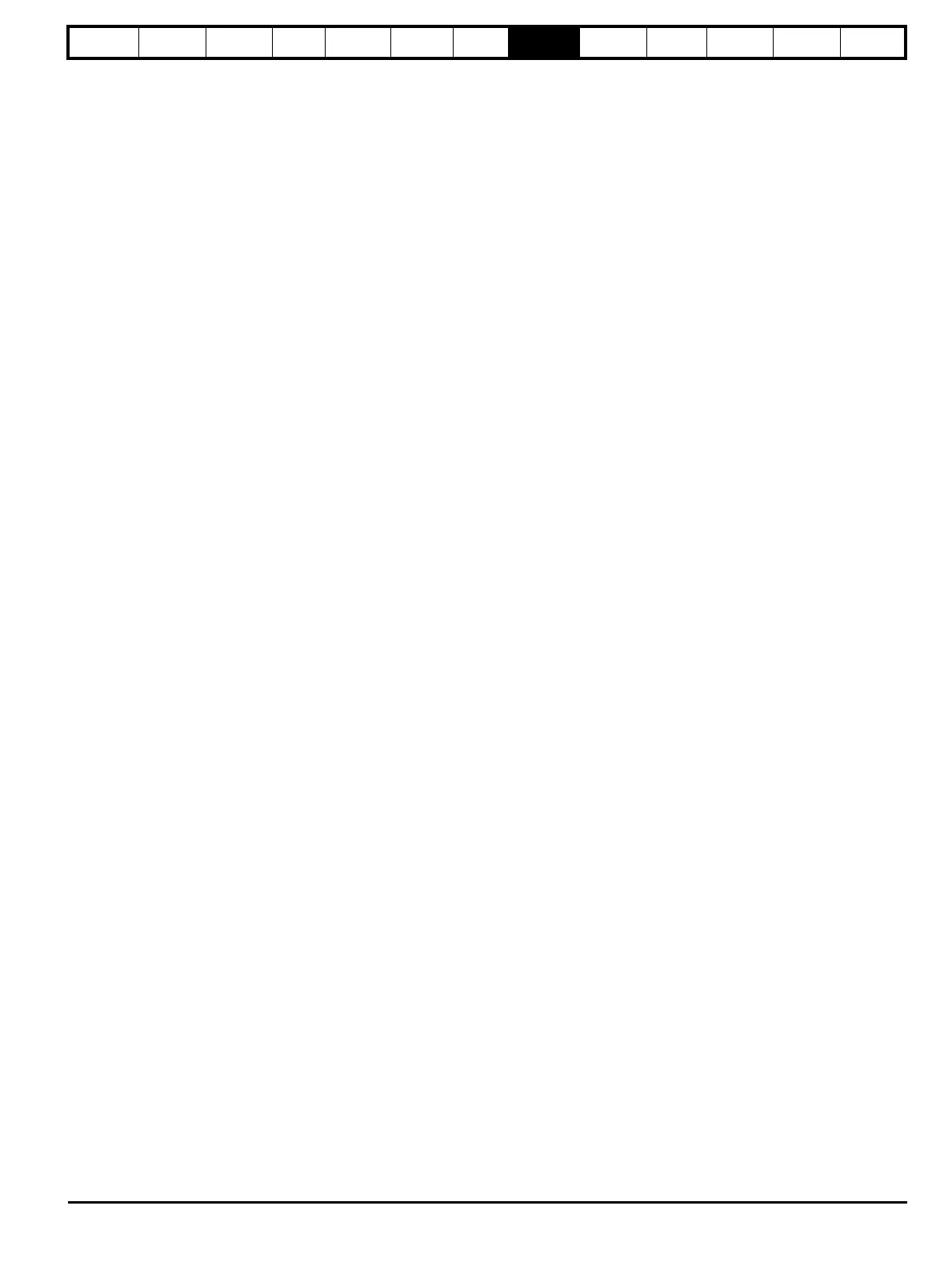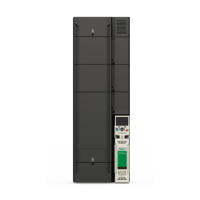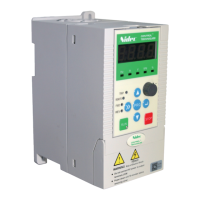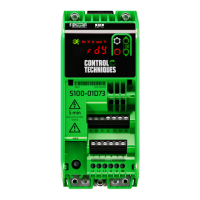Safety
information
Introduction
Product
Information
System
design
Mechanical
Installation
Electrical
Installation
Getting
started
Optimization
Parameters
Technical
data
Component
sizing
Diagnostics
UL
Information
Unidrive M Regen Design Guide 145
Issue Number: 1
8.8 Frequency limits
Frequency limits have been applied to the Regen system output (defined
in Regen Minimum Frequency (03.024) and Regen Maximum Frequency
(03.025)). These are enabled as default. If the Regen system supply
frequency is within approximately 5 Hz of either limit for 100 ms, the
system will not remain synchronized and will attempt to re-synchronize.
The frequency limits are important if the supply is removed when the
Regen system is active, as the system could remain active, particularly if
energy is fed into the dc bus, with an uncontrolled output frequency and
voltage.
8.9 Voltage limits
Voltage limits are available (defined in Regen Minimum Voltage (03.026)
and Regen Maximum Voltage (03.027)). These are not enabled as
default. If the voltage limits are active, a Voltage Range trip is generated
when the voltage is outside the range defined for 100 ms. The voltage
limits are important if the supply is removed when the Regen system is
active, as the system could remain active, particularly if energy is fed
into the dc bus, with an uncontrolled output frequency and voltage.
8.10 Supply voltage detection
Synchronization issues can be seen when the dc bus voltage is not
proportional to the supply voltage, for example, a PV application.
There are modes in Supply Voltage Detection Mode (03.029) which
provide a robust and fast synchronization for these non standard
applications.
8.11 Island detection
The purpose of this feature is to prevent unwanted islanded operation,
where part of the power distribution network becomes separated from
the power grid and is unintentionally maintained by an inverter.
An island detection system designed to meet the requirements of
IEEE1547 and VDE 0126-1-1 has been included. Both IEEE and VDE
standards describe an unintentional islanding test that uses a parallel
resonant RLC load to create a worst case condition for the formation of
unintentional islands. When the detection system is enabled, a small
reactive current is injected that allows the inverter to detect this resonant
condition. A system has been included that allows the reactive current
injected by a number of Regen drives to be synchronized to a suitable
master clock (required in some large scale PV applications).
8.12 Synchronization headroom
(Pr 03.035)
Synchronization Headroom (03.035) allows more control to prevent
over-voltage trips occurring during synchronization due to non-standard
filter components or high impedance power supply.
8.13 Harmonic reduction
Even with the optimum DC bus voltage and current controller set-up, it is
possible for supply voltage distortion to cause harmonic distortion in the
AC currents between the supply and the Regen drive. The Regen drive
includes an additional system to reduce imbalance, 5th harmonics and
7th harmonics in the AC currents. This system is enabled with Harmonic
Reduction Enable (03.021). Distortion reduction due to voltage
imbalance is enabled as default.
8.14 Active current reference
It is possible for the user to define the active current reference via Active
Current Reference (04.009). It should be noted that the Regen drive can
no longer control its own DC bus voltage and so this must be controlled
by an external system e.g. the voltage master module in a SPV system.
8.15 Current feedback filter disable
(Pr 04.021)
The filtering applied to the active and reactive current parameters can be
disabled using Current Feedback Filter Disable (04.021). This is
provided for SPV applications where the drive current measurement is
used by an external controller.
8.16 DC bus voltage high range
(Pr 05.023)
DC bus Voltage High Range (05.023) provides voltage feedback that
has lower resolution and a higher range than DC bus Voltage (05.005)
and so it is possible to determine the DC bus voltage even if this
exceeds the level of the over-voltage trip.

